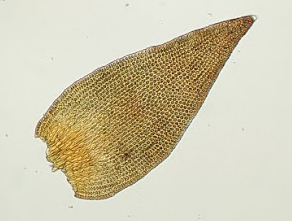Andreaea mutabilis
Hook.f. & WilsonDioicous. Compact tufts and mats on rock. Stems (2–) 6–9 (–30) mm long. Leaves erect-spreading to spreading-secund when moist, imbricate and appressed to homomallous or sometimes wide-spreading when dry, lanceolate to narrowly ovate-lanceolate, 0.35–0.9 mm long, 0.15–0.4 mm wide, ±concave; apex acute or acuminate; costae absent; margins entire, incurved except at extreme apex where plane; cells in apical half isodiametric to short-rhombic, papillose abaxially, 5–11.5 μm long, 5–10 μm wide, unistratose; cells near base in centre longer, rectangular-elongate, to 45 μm long; cells near margins at base isodiametric to oblate-subquadrate, 5–10 μm long, 5–10 μm wide. Perigonial paraphyses usually absent. Perichaetial leaves convolute and sheathing, Pseudopodia c. 0.4 mm long. Capsules c. 0.4–0.65 mm long. Turgid spores 12–24 (–32) μm diameter; shrivelled spores rare, 12–20 μm diameter.
VVP, GGr, EGU, HNF, HFE, VAlp. In rocky mountainous areas above 900 metres east of Melbourne and widespread in rocky areas throughout the Grampians and neighbouring Black Range. Also Qld, NSW, ACT and Tas. New Zealand, New Guinea, Indonesia, Taiwan, southern Africa, South America, north-western North America, western Europe and Macquarie, Auckland, Campbell, Kerguelen, Tristan da Cunha, Faroe and Falkland Islands.
 Spinning
SpinningMisapplications
Murray, B.M. (2006). Andreaeaceae. Flora of Australia 51: 108–123.

